Search Images
Browse Content (p. 1504)
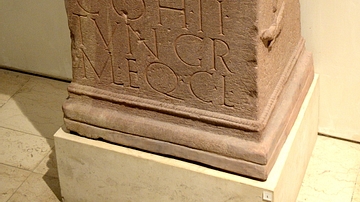
Image
Altar Dedicated to the Roman Emperor
Roman stonemasons made altars and other monumental masonry as well as other buildings. This altar is dedicated to the Roman emperor by army units and shows the skill of the masons in both lettering and decoration. From Birrens, Scotland...
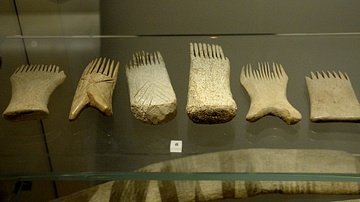
Image
Weaving Combs from Ancient Scotland
These combs were made of whalebone. What makes whalebone particularly useful is not only is it strong, dense, and resilient, but it can also be used to produce objects of very large sizes. This collection of weaving combs is from Gurness...
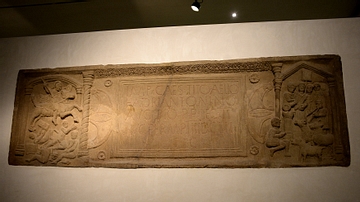
Image
Bridgeness Commomerative Slab
This carved slab (also known as the Bridgeness slab) commemorates building the most eastern part of the Antonine wall, which cut Scotland into two. Its grand inscription records the army's dedication of the building work to their emperor...
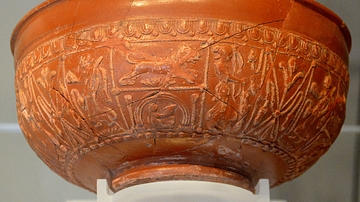
Image
Bowl with Goddess Diana from Newstead
Diana was goddess o hunt, moon, and childbirth. She was one of the three maiden goddesses; Diana, Minerva and Vesta. They swore never to get married. The outer surface of this bowl was decorated with Diana with bow and pray, and Victory holding...
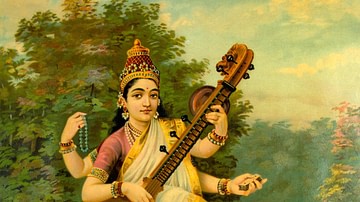
Image
Saraswati
Hindu goddess Saraswati (Sarasvati) by Raja Ravi Varma, 19th century. She is depicted with the classical Indian instrument the vina and a peacock, one of her vehicles.
Metropolitan Museum of Art, New York.
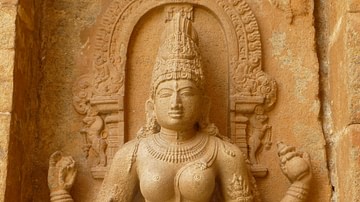
Image
Saraswati, Gangaikondacholapuram
A granite statue of the Hindu goddess Saraswati (Sarasvati) from the Brihadeshwara temple, Gangaikondacholapuram, Tamil Nadu, India. c. 1025 CE.
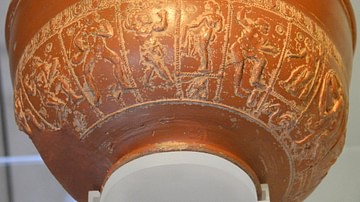
Image
Bowl with Neptune, Inveresk
Neptune was god of the oceans, freshwater, and seas (he was the counterpart of the Greek god Posiedon). The outer surface of this bowl was decorated with Neptune and a merman on his left and dolphin and Jupiter to his right. From Inveresk...
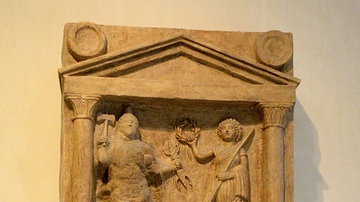
Image
Scultpture of Jupiter Dolichenus & Juno Regina
Roman soldiers, when they came to Scotland, brought their own gods and goddesses from their local areas. Exotic cults were easily adopted too, such as that developed to Jupiter Dolichenus (a mixture of Roman Jupiter and a Syrian sky god...
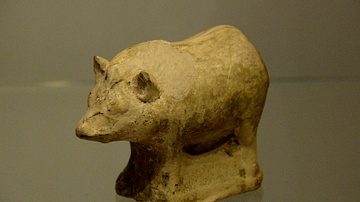
Image
Roman Votive Boar, Burnswark
This small boar was an offering to a god. Offerings were made on the hollow on the top of an altar (wine was often poured onto the altar). The idea of a contract between human beings and gods was central to Roman religious practice. From...
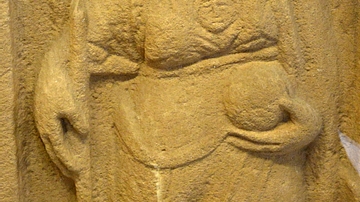
Image
Brignatia
Brignatia, goddess of war and engineers, was worshiped in Celtic religion. She was the chief goddess of a local tribe in northern England and southern Scotland. Here, she was depicted as a Roman goddess; she has 2 wings, wears a crown, and...